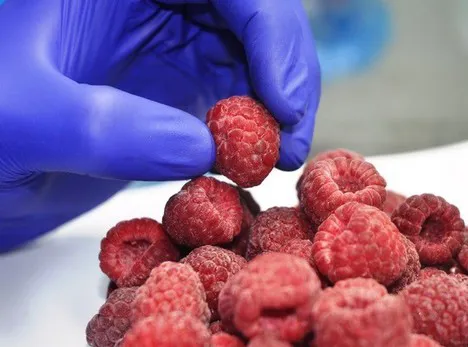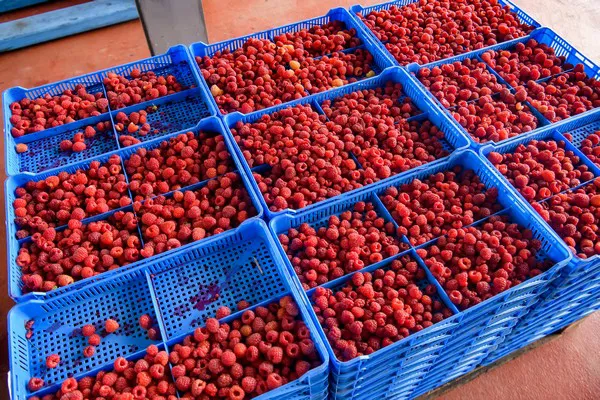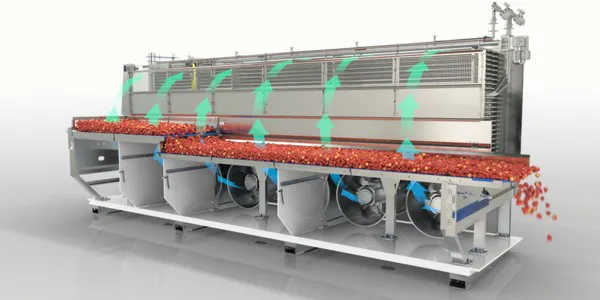The global export of raspberries saw a record-breaking increase in 2021, especially in Europe and North America, says OctoFrost marketing manager coordinator Sana Rehman: “This increase can be explained by the higher global prices for frozen raspberries, which led to expanded raspberry plantations. Thanks to its perceived health benefits, adaptivity to different soil and climatic conditions, and increased economic efficiency, raspberries offer a lot of advantages over other fruits, including a quick return on the initial investments.”

“To remain competitive within the industry, frozen raspberry processors smartly choose their freezing methods and equipment in order to be able to sell premium products on the global market for a competitive price. Two most common methods of freezing raspberries are cold storage freezing, achieved through static freezing, and individually quick frozen (IQF) freezing, which is achieved in a fluidized freezer. Static freezing involves stacking boxes with products inside of a cold chamber and slow-freezing it for about half a day. On the other hand, IQF freezing involves freezing in a fluidized tunnel that quick-freezes raspberries within minutes.”
“As static freezing takes a significantly longer amount of time to freeze the products, the capacity with this type of freezing is compromised. On top of that, processors can’t freeze washed or wet raspberries using static freezing, which makes the process even more difficult,” Rehman explains. “While a cold storage can freeze three tons over a span of about 8 to 12 hours, the OctoFrost IQF Freezer can freeze that amount in just eight minutes, roughly. Thus, a fluidized freezer allows processors to run significantly higher capacities and produce a much greater output compared to the static approach.”

Though the popular belief with static freezing is that it would maintain the berries’ shape, that isn’t always the case, Rehman says: “Having a stack of overripe raspberries put together can result in clumping, which damages the product’s appearance. On the other hand, a fluidized freezer with bedplate technology ensures that individual pieces of raspberries remain separated during the freezing process. The adjustable airflow and air pressure in the OctoFrost IQF Freezer also ensures gentle freezing and minimal crumbles, without compromising product shape and IQF quality.”
According to Rehman, dehydration is one of the problems processors face while processing raspberries. “Customers report that in IQF freezing, dehydration levels for IQF raspberries range from 1% to 5%, while in static freezing the levels can range from 4% to 10%, which adds up in terms of weight loss. With a fluidized freezer, raspberry processors save up to 10% in yield and are able to profit more on the basis of dehydration alone.”

“Given the multiple benefits that a fluidized freezer offers over a static freezer, moving from static slow-freezing to fluidised IQF freezing becomes an intelligible choice for a modern IQF berry processing business. With more and more berry plantations emerging every year, together with OctoFrost Freezer’s ability to process multiple kinds of applications throughout the year, processors can grow their businesses at substantially higher rates and enjoy premium profits.” Rehman concludes.
For more information:
OctoFrost Group
Email: [email protected]
www.octofrost.com
